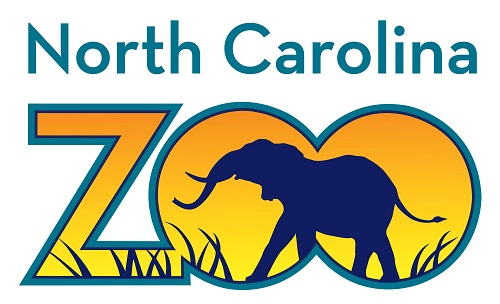North Carolina Zoo’s Wildlife Conservation Becomes Focus to Raise Awareness of Wild Species
Posted on 02/11/16 The North Carolina Zoo’s new logo, part of the Zoo’s efforts to focus on Wildlife Conservation.
The North Carolina Zoo’s new logo, part of the Zoo’s efforts to focus on Wildlife Conservation.
|
ASHEBORO, NC – The North Carolina Zoo, which is the world’s largest natural habitat Zoo and an international leader in wildlife conservation is going even further to raise awareness of its work to save species in the wild. The Zoo is embarking on a rebranding initiative which will both provide a new look for the Zoo and reemphasize the Zoo’s mission to conserve wildlife. “Zoos exist for two main reasons, to educate the public and to protect wildlife from extinction,” said Pat Simmons, Director of the N.C. Zoo. “Just by visiting the North Carolina Zoo you are supporting a wide range of conservation initiatives, from protecting amphibians here in North Carolina to saving gorillas from extinction in Africa.” The first step in the Zoo’s efforts is a new logo that features a silhouette of an elephant roaming through grass against a colorful sunrise. The new logo is symbolic because the Zoo is known for its large natural animal habitats. Plus, for nearly 20 years the Zoo has been extensively involved in saving and protecting elephants in Africa. The Zoo currently exhibits six African elephants. This spring, Zoo guests will see additional changes to the appearance of the Zoo, including an updated look to the entrance signs, new uniforms for the staff and a new look for Zoo vehicles. New Zoo education initiatives will feature the work that Zoo staff do across the state and around the world to protect animals in the wild from extinction. These initiatives take the Zoo’s conservation team to remote parts of the globe, from the mountains of North Carolina to the jungles of Africa. In North Carolina, the Zoo is helping to protect some of the state’s most iconic amphibians, including hellbender salamanders and Pine Barrens tree frogs (the State Frog of North Carolina). Zoo staff spend hundreds of hours each year studying and monitoring these species in order to better conserve them. The N.C. Zoo also manages over 2,000 acres of forest in central North Carolina. These forests protect rare and unusual plant communities like long-leaf pine, along with habitat for wildlife like bobcats. In Africa, from the rainforests of Cameroon to the savannas of Tanzania, Zoo staff work with some of the world’s most endangered species. Members of the Zoo’s conservation team place satellite tracking devices on elephants and vultures, use DNA to monitor gorillas, count lions with smartphones and work on the frontlines of the battle against the international wildlife trade, providing rangers with high-tech tools to stop elephant poachers. Zoo staff also work closely with people, helping to teach rural communities about the importance of conserving the environment. About the North Carolina Zoo The North Carolina Zoo provides an experience like no other zoo anywhere. With five miles of exhibits, nearly 2,000 animals and 52,000 plants it is the largest natural habitat zoo in the world and an international leader in wildlife conservation. Find yourself surrounded by some of Africa’s giants including elephants, rhinos, and giraffes; share the love of gorillas with Mosuba and his six-member troop; welcome polar bear Nikita as he joins Anika in polar plunges every day at their Rocky Coast Exhibit; or join in the fun at the mud café in the Kidzone. Located in center of the state in Asheboro, it is convenient to visit from anywhere in North Carolina. The North Carolina Zoo welcomes nearly 750,000 guests each year. Plan your adventure at www.nczoo.org. |
|
About the North Carolina Department of Natural and Cultural Resources ### |






